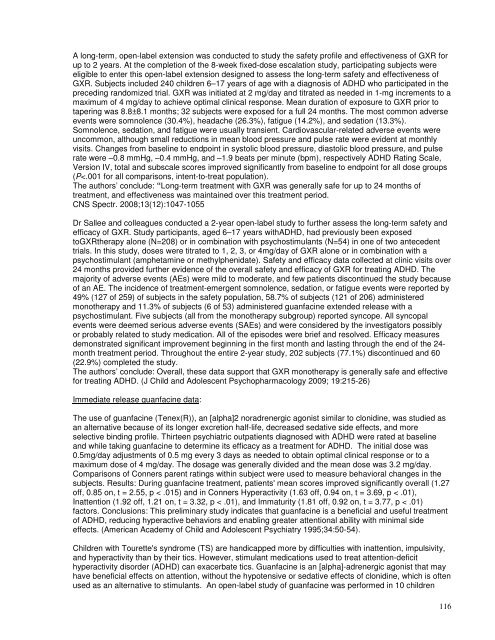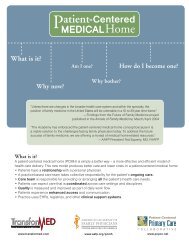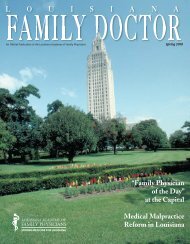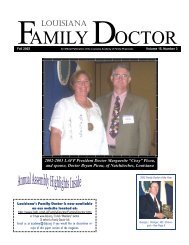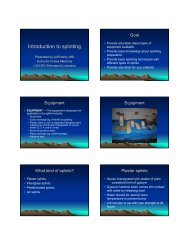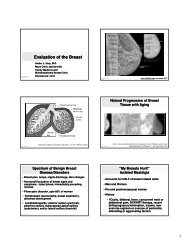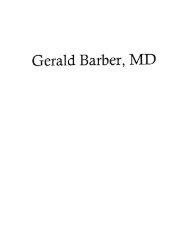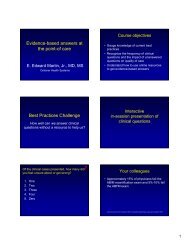New Drug Update 2009-2010 - LAFP
New Drug Update 2009-2010 - LAFP
New Drug Update 2009-2010 - LAFP
Create successful ePaper yourself
Turn your PDF publications into a flip-book with our unique Google optimized e-Paper software.
A long-term, open-label extension was conducted to study the safety profile and effectiveness of GXR for<br />
up to 2 years. At the completion of the 8-week fixed-dose escalation study, participating subjects were<br />
eligible to enter this open-label extension designed to assess the long-term safety and effectiveness of<br />
GXR. Subjects included 240 children 6–17 years of age with a diagnosis of ADHD who participated in the<br />
preceding randomized trial. GXR was initiated at 2 mg/day and titrated as needed in 1-mg increments to a<br />
maximum of 4 mg/day to achieve optimal clinical response. Mean duration of exposure to GXR prior to<br />
tapering was 8.8±8.1 months; 32 subjects were exposed for a full 24 months. The most common adverse<br />
events were somnolence (30.4%), headache (26.3%), fatigue (14.2%), and sedation (13.3%).<br />
Somnolence, sedation, and fatigue were usually transient. Cardiovascular-related adverse events were<br />
uncommon, although small reductions in mean blood pressure and pulse rate were evident at monthly<br />
visits. Changes from baseline to endpoint in systolic blood pressure, diastolic blood pressure, and pulse<br />
rate were –0.8 mmHg, –0.4 mmHg, and –1.9 beats per minute (bpm), respectively ADHD Rating Scale,<br />
Version IV, total and subscale scores improved significantly from baseline to endpoint for all dose groups<br />
(P


